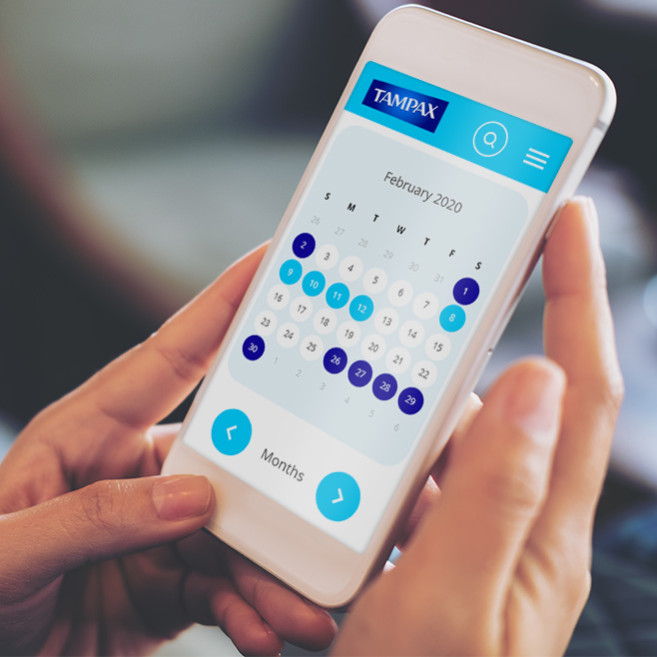Period Tracker
Why should I use a period tracker?
Do you wonder each month when your period is due? Using a period cycle tracker, like our Tampax period tracker, can give you a heads up so you’re never surprised when that time of the month rolls around. You’ll know exactly when to expect it. When you track your cycle with a period tracker and know when to have tampons on hand, you can face every day with greater confidence.

Please note that this is an assessment of your menstrual cycle only.
So, what's a ‘normal’ cycle anyway?
First of all, stop thinking about normal. Every girl is different. What’s important is that you find out what’s normal for you; a period tracker will help you to do just that. All cycles are unique, but between pre-period, period and ovulation, there are a few things we all have in common:
Pre-period
The dreaded premenstrual syndrome. Some common symptoms of PMS are headaches, bloating, irritability and crying more than usual. In other words, that urge to sit on the couch in joggers with a tub of ice cream and cry over ‘The Notebook’. We’ve all been there.
It’s common to experience PMS in the three days leading up to your period. And just so you know: diet, caffeine and stress can increase the intensity of PMS symptoms.
While these symptoms can be painful and uncomfortable, the good news is there are ways to help manage them:
- Resist the urge to have an extra cup of coffee
- Take an over-the-counter painkiller
- Use a hot water bottle.
Period
This is the start of your cycle and when bleeding begins. But why do we bleed in the first place? Since your egg wasn’t fertilised, your womb lining sheds and leaves your body. Thus, blood.
Here are some facts about periods:
- Healthy periods generally last between four and seven days, with the heaviest days being the first and second
- An average cycle is 28 days, but can range from 21 to 35 days (to work yours out use a period cycle tracker)
- Bleeding usually amounts to somewhere between 10-80 grams, or 1 to 6 tablespoons of fluid (not that we’re measuring, but it’s good to know for keeping track of tampon changes).
See your doctor if you find yourself bleeding through six or seven regular tampons a day, or if you’re on your period for more than seven days.
Peak ovulation
This is the time when you’re ovulating and at the highest risk for pregnancy. This fertile time lasts about six days. In a 28-day cycle, ovulation typically occurs on day 14.
How to track your period
To calculate your period, you'll need to count the days in between your last few periods. Start counting on the first day of your period and stop counting on the day before your next period. This is the number of days in one menstrual cycle. Do this for a few cycles, then add up the total number of days and divide them by the number of cycles. This will give you the average number of days in your cycle, and once you know this number, you'll be able to track your period easily.
Have more period questions? We have answers.
